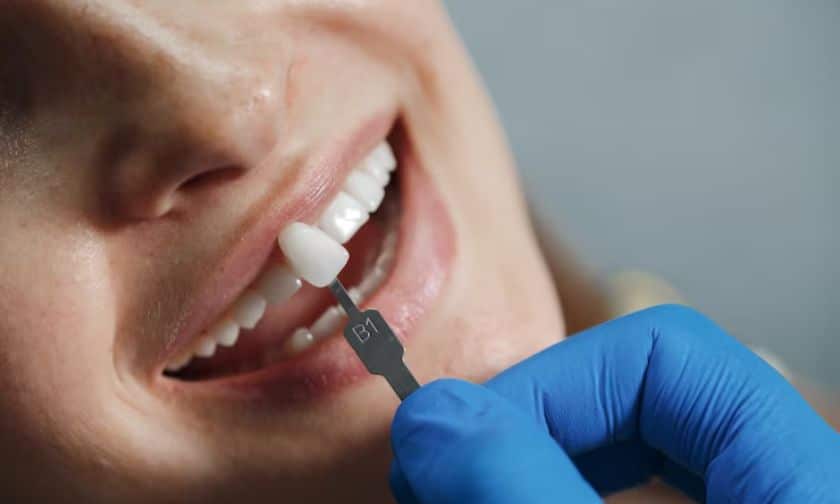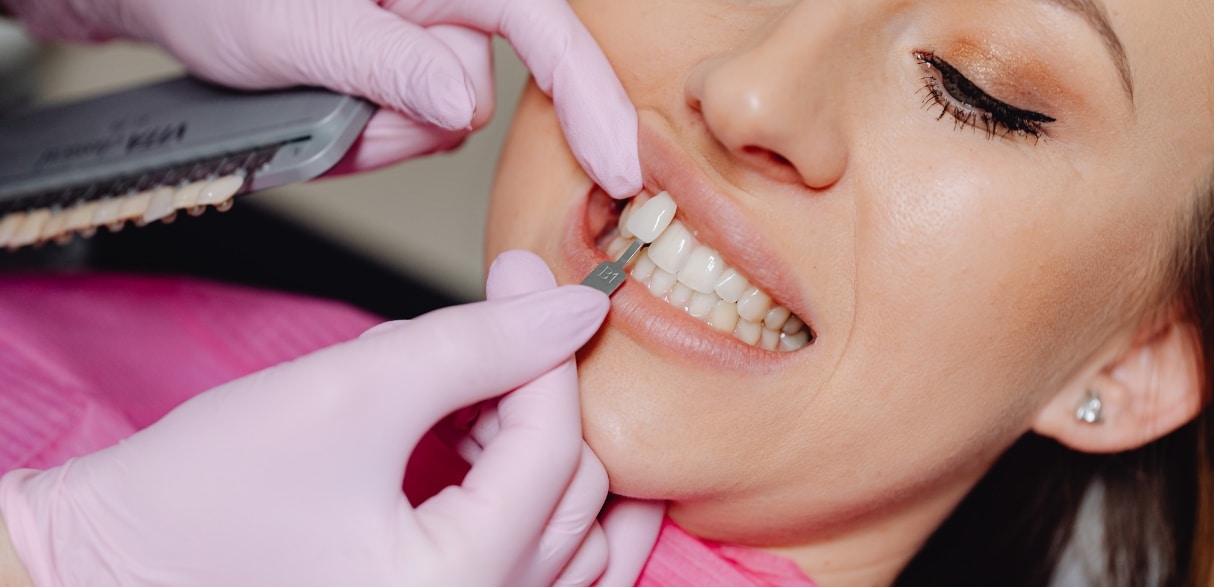How to Handle Chipped or Cracked Porcelain Veneers?

Have you ever wondered how to deal with chipped or cracked porcelain veneers?
These thin shells of porcelain can dramatically enhance your smile, but they aren’t immune to damage. Whether it’s from an accidental impact or wear over time, knowing how to address these issues promptly can make a significant difference in preserving your dental investment.
Porcelain veneers are renowned for their natural appearance and durability, but like natural teeth, they can chip or crack under certain circumstances. Understanding what steps to take immediately after noticing damage and how to navigate between temporary solutions and professional interventions can help you maintain your smile’s brilliance.
Let’s delve into practical tips and professional insights on managing chipped or cracked porcelain veneers to ensure you’re well-prepared should this situation arise.
Immediate Steps to Take
When you notice a chipped or cracked porcelain veneer, swift action can prevent further damage and discomfort. Here’s what you should do:
- Assess the damage: Carefully examine the affected veneer to determine the extent of the damage. Note any sharp edges or areas where the veneer has come loose.
- Avoid certain foods and activities: Temporarily refrain from eating hard, sticky, or acidic foods that could exacerbate the damage or cause the veneer to dislodge further. Avoid habits like biting nails or using teeth to open packages.
- Contact your dentist: Immediately schedule an appointment with your dentist or prosthodontist. They can provide specific guidance based on the severity of the damage and may recommend interim measures until your appointment.
Taking these steps promptly can help preserve the remaining structure of your veneer and prevent additional complications.
Temporary Solutions
While awaiting professional treatment for your chipped or cracked porcelain veneer, consider these temporary solutions:
- Using dental wax: Apply dental wax over the chipped area to smooth any rough edges and prevent irritation to your tongue or lips.
- Over-the-counter repair kits: Some kits are available to temporarily repair minor damage to veneers. Follow the manufacturer’s instructions carefully.
- Managing discomfort: Over-the-counter pain relievers can help manage any discomfort or sensitivity caused by the damaged veneer. Avoid using the affected tooth for chewing until it can be examined by your dentist.
Professional Repair Options
When dealing with a chipped or cracked porcelain veneer, professional repair options can restore both function and aesthetics. Here are the main options to consider:
- Bonding: Dental bonding involves applying a tooth-colored resin to the damaged area of the veneer. This resin is then hardened with a special light, bonding it to the existing veneer. Bonding is ideal for minor chips or cracks and can typically be completed in a single dental visit.
- Veneer replacement: If your porcelain veneer is severely damaged or compromised in a way that impacts its structure, your dentist may suggest replacing it. This process involves removing the damaged veneer and creating a new one that blends perfectly with your natural teeth. Replacing the porcelain veneer provides a strong, durable, and long-lasting solution.
- Cost considerations: The cost of repairing or replacing a porcelain veneer can vary based on several factors, including the extent of the damage, the location of the dental practice, and the expertise of the dentist. Dental insurance may cover a portion of the cost, particularly if the damage is due to an accident or trauma.
- Long-term benefits: Investing in professional repair or replacement of a damaged porcelain veneer ensures not only cosmetic enhancement but also functional improvement. Properly maintained veneers can last for many years, providing a natural-looking smile and protecting underlying teeth from further damage.
Preventing Further Damage
To maintain the integrity of your porcelain veneers and prevent future issues, follow these preventive measures:
- Proper oral hygiene practices: Brush your teeth at least twice a day and floss daily to remove plaque and debris that can weaken veneers and lead to decay.
- Avoiding hard foods and habits: Refrain from biting hard objects like ice cubes, pens, or fingernails, as these can chip or crack porcelain veneers. Similarly, avoid habits like chewing on hard candies or using your teeth to open packages.
- Regular dental check-ups: Schedule routine dental visits every six months or as recommended by your dentist. Regular check-ups allow your dentist to monitor the condition of your veneers and address any concerns before they worsen.
Knowing how to handle chipped or cracked porcelain veneers can prevent further damage and ensure lasting results. Whether you need immediate steps, temporary solutions, or professional repairs, acting promptly and seeking dental advice are crucial. By following preventive measures and maintaining good oral hygiene, you can preserve the beauty and functionality of your veneers for years to come.





